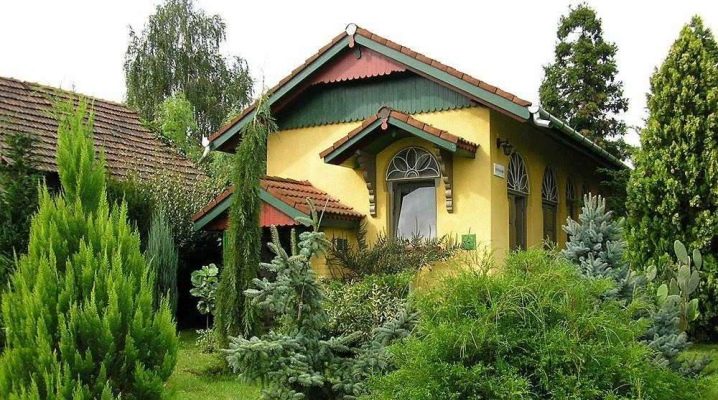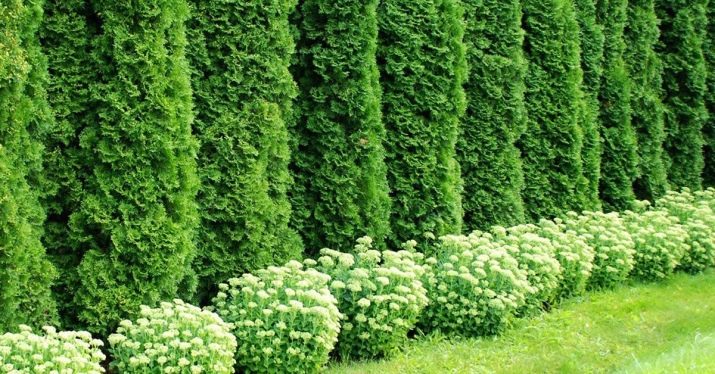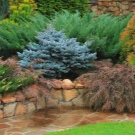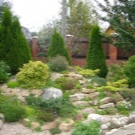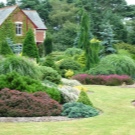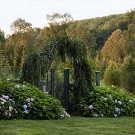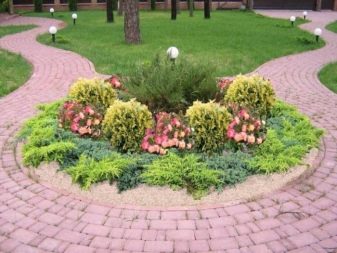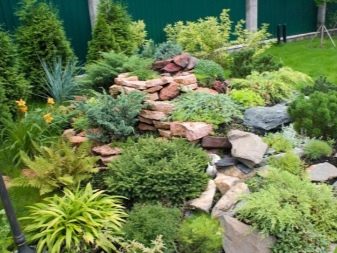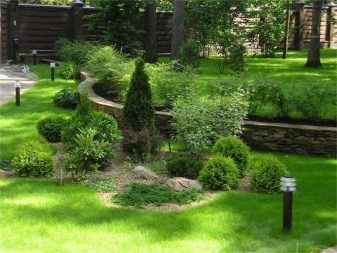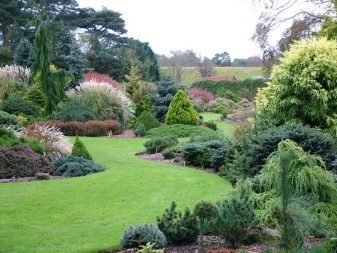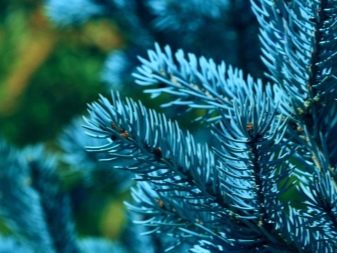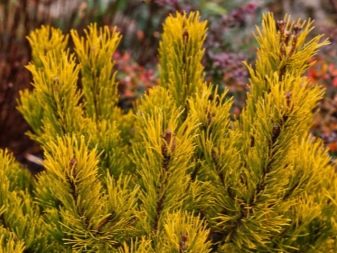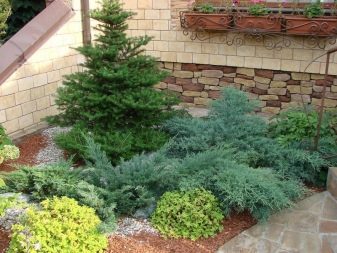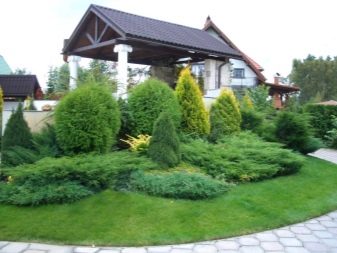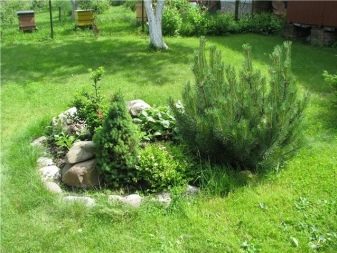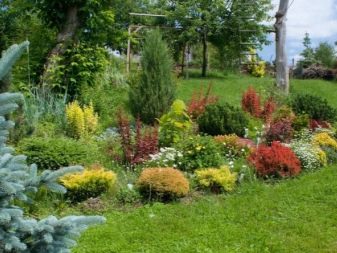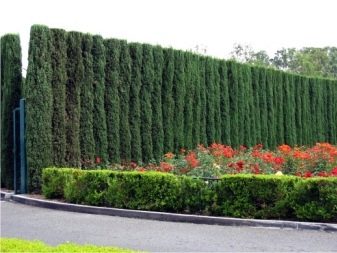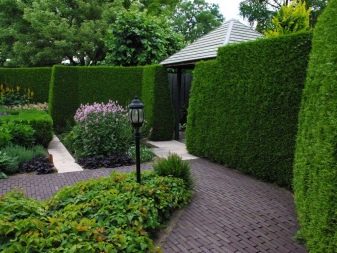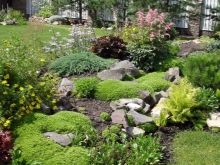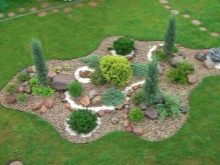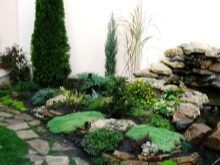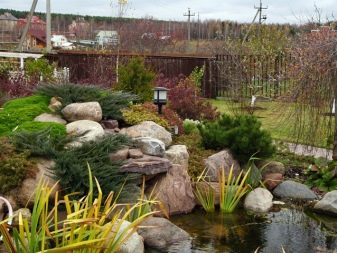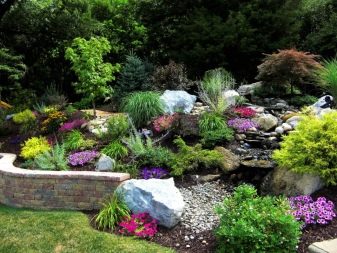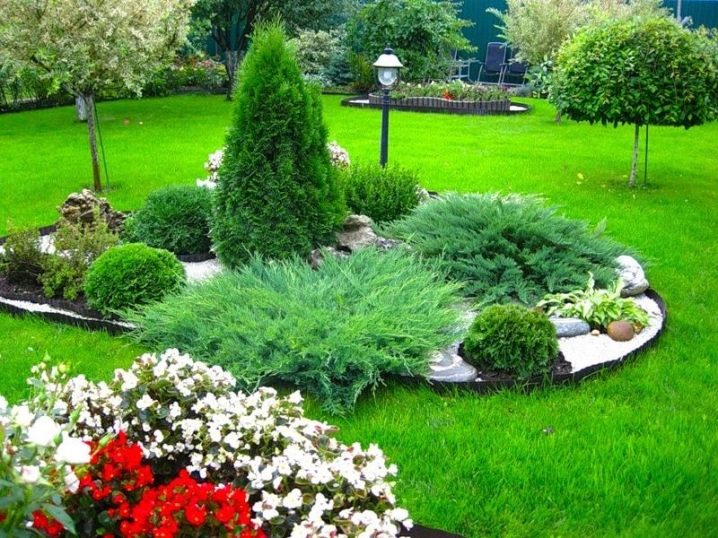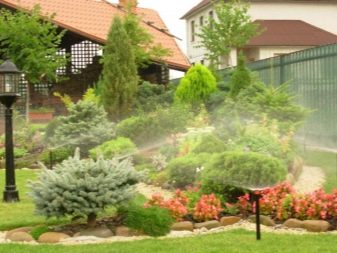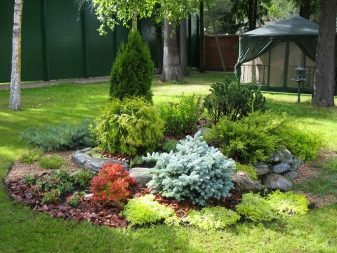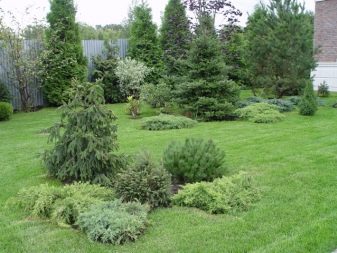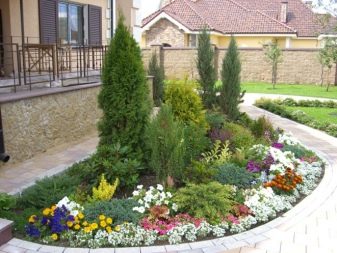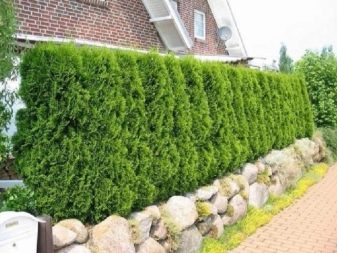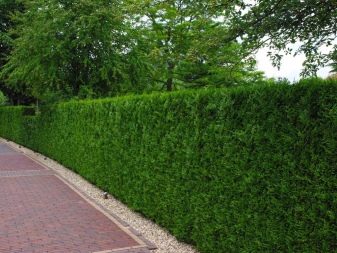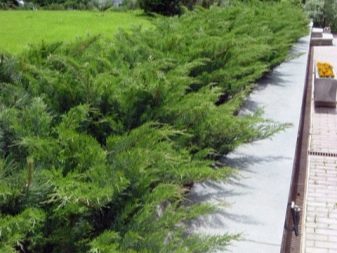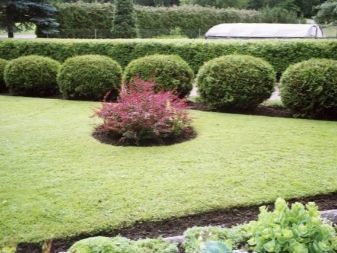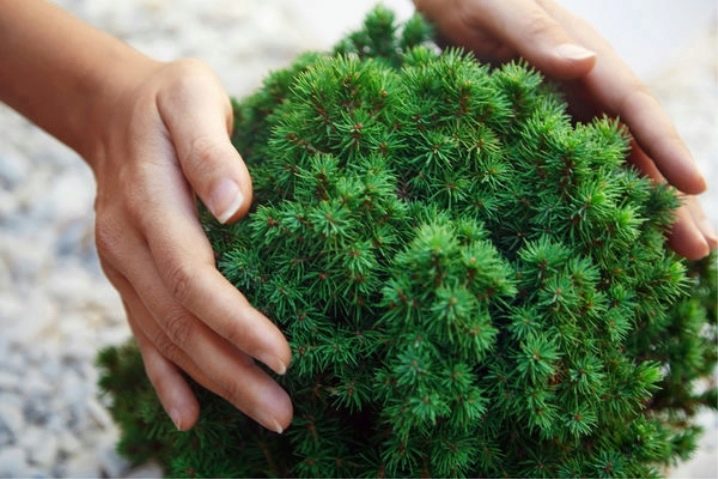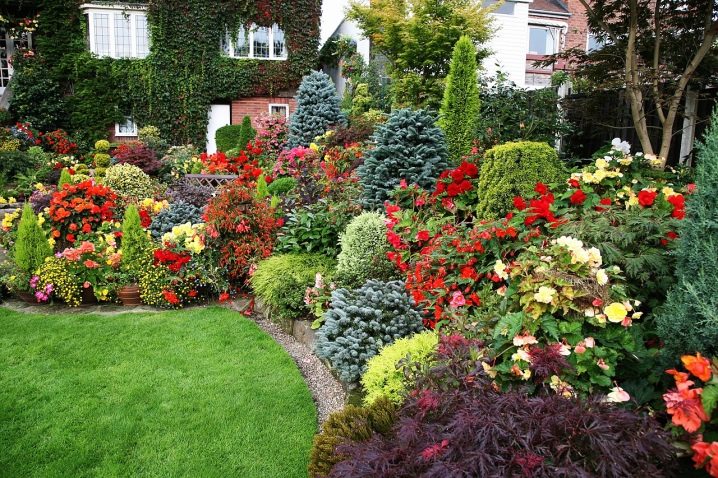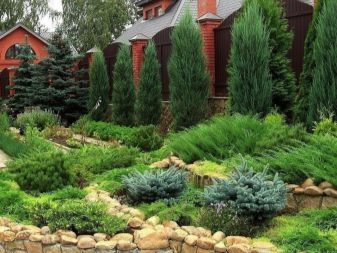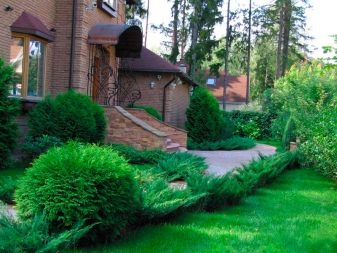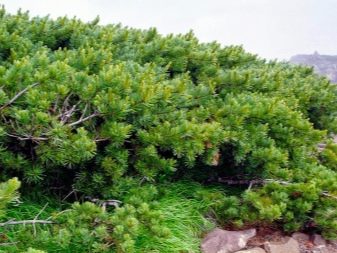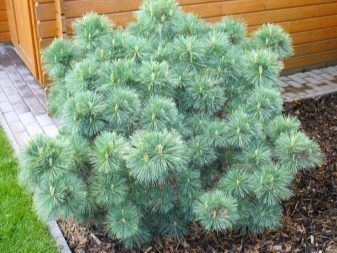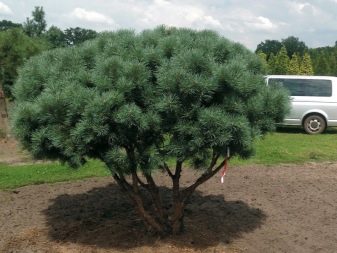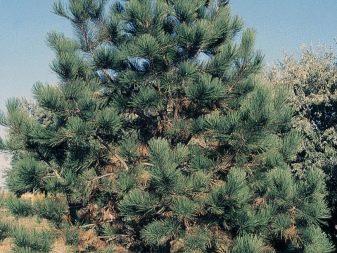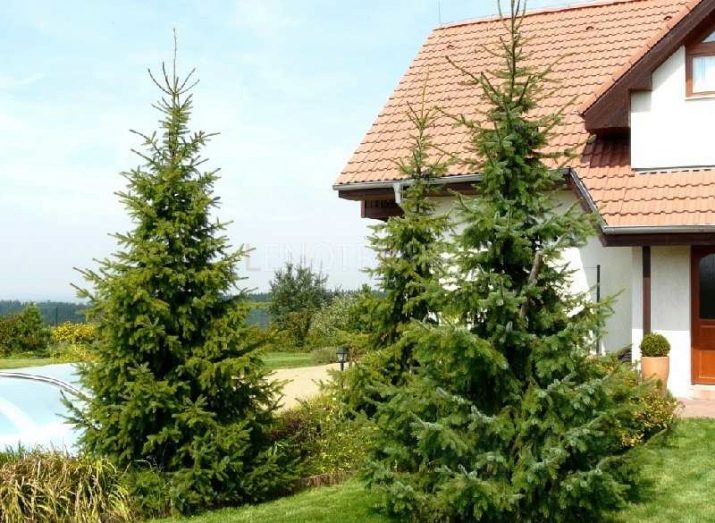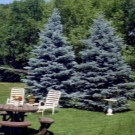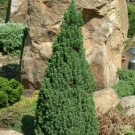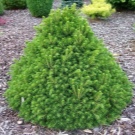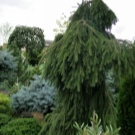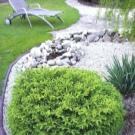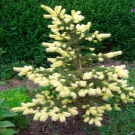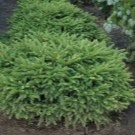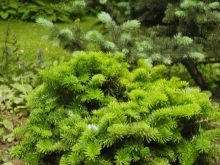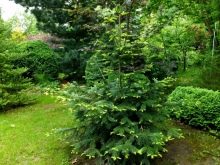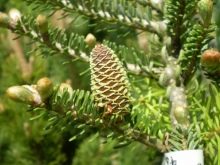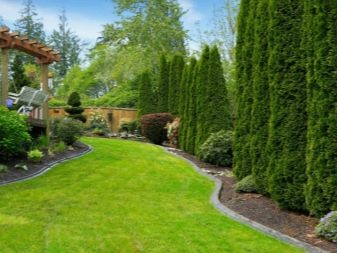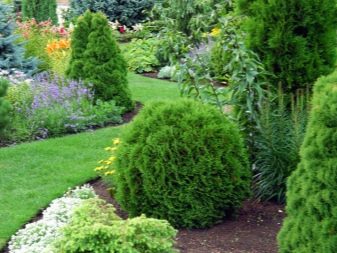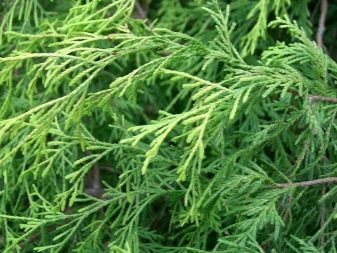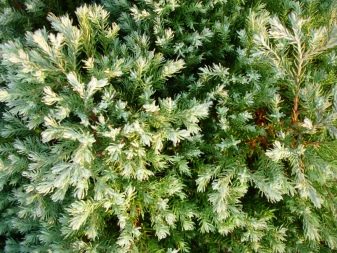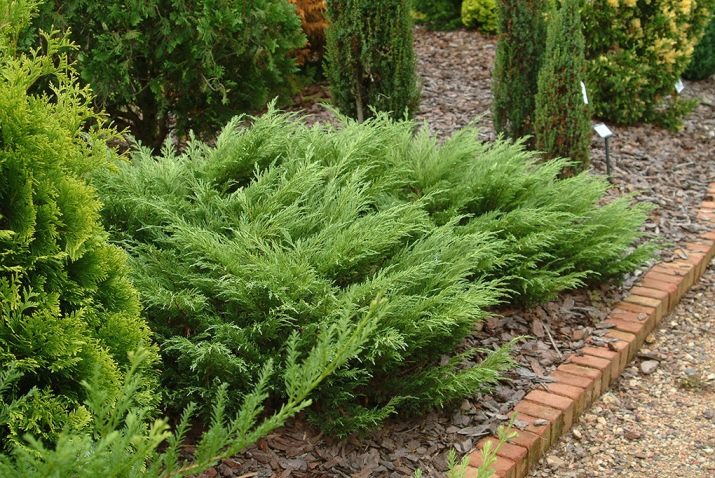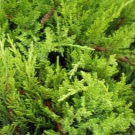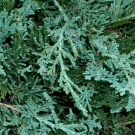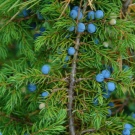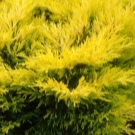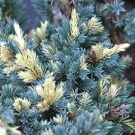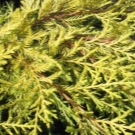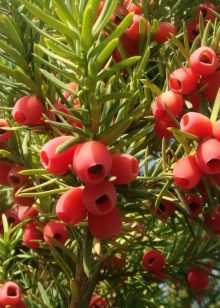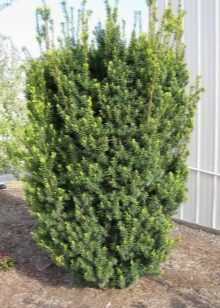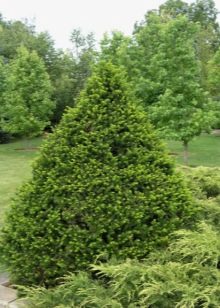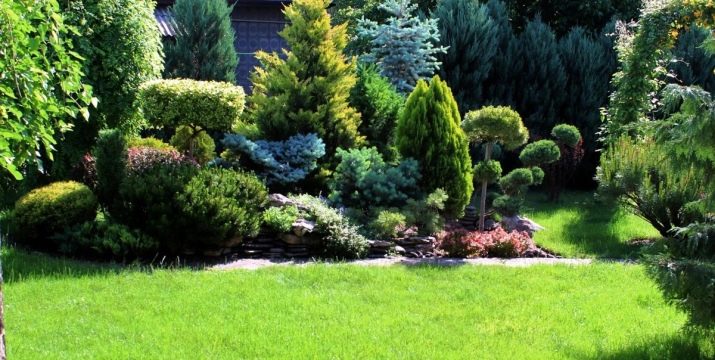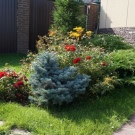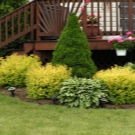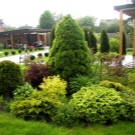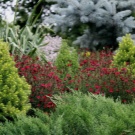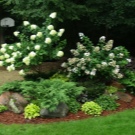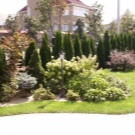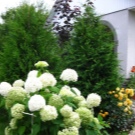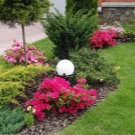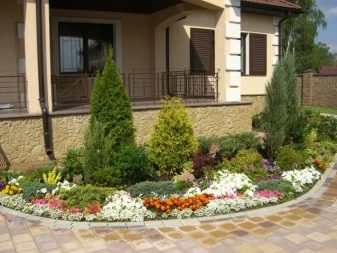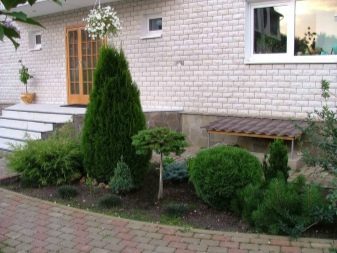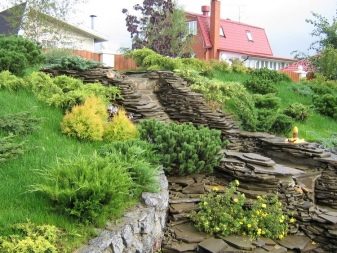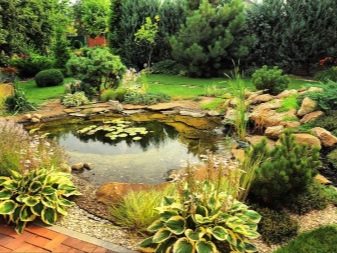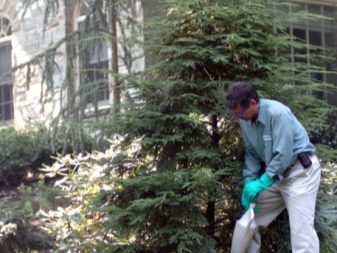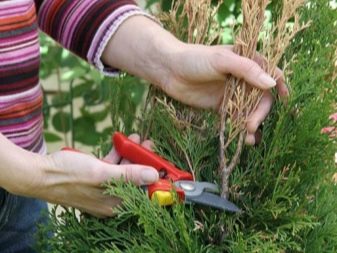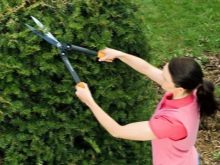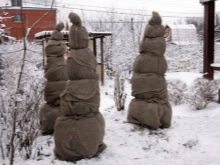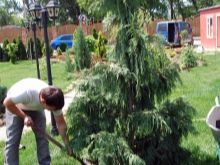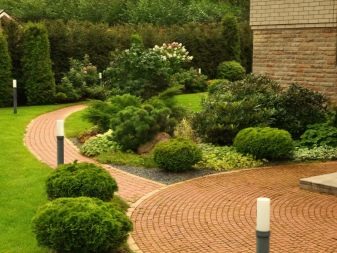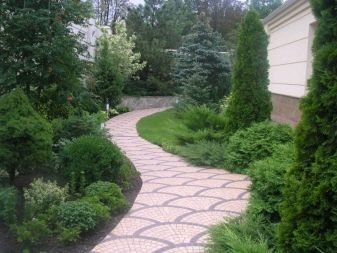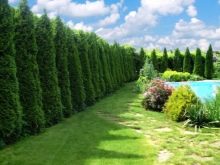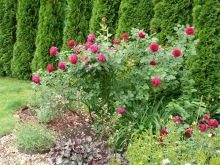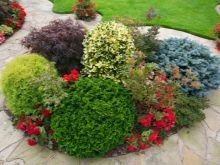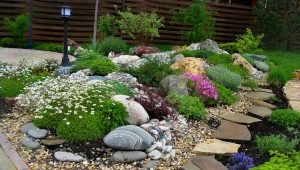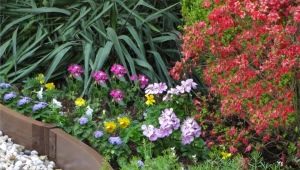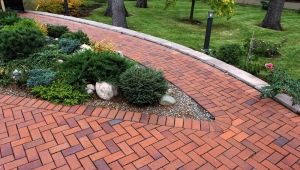Subtleties of landscape design: the rules for selecting and planting conifers
Coniferous plants have long occupied an honorable place in landscape design. They are pretty unpretentious, look great and smell, clean the air and stay green all year round. In addition, they are perfectly combined with trees of other species, flowers, stones or lawn, which allows you to create a huge number of different compositions. The most popular species are flower beds, rockeries, alpine slides and hedges, although some prefer to plant single trees or grow dwarf bonsai trees at all.
An impressive range of conifers of various breeds, colors and sizes is presented on the modern market. Due to this, it is possible to ennoble with evergreens not only a park or extensive grounds, but also a rather modest corner of a usual garden plot.
Features of the composition
In landscape design, as a rule, specially grown dwarf plant species are used, which are expensive, therefore it is better to start with drawing a sketch of a future composition on paper. One of the primary factors is undoubtedly the size of the area allotted for planting, as well as the features of the terrain. Despite the known unpretentiousness, It is best to plant hvoyniki on the western or eastern side of the site.
A flat, flat platform is suitable for rock arias or flower beds, and a gentle slope or artificial pond will be an ideal basis for an alpine slide.
When creating a layout should pay attention to the geometry of the planned composition. Elements must be harmoniously combined in shape and size. As a rule, the largest ones are the semantic center and are located in the middle or at the very beginning of the composition. The difference in height and shape is better to have in descending order: from the larger and more massive to the outskirts, avoiding sharp jumps.
Attention should be paid to the choice of colors. Conifers can be quite different from each other,providing a fairly wide palette both inside the original green color (from pale green to dark blue-green tones), and having a variety of mixed colors - yellowish, blue or purple. To the canvas did not work coarse, designers advise:
- choose no more than two colors for the composition of the three elements;
- on the five-element composition take three colors.
- if there are more components, it is recommended to arrange them in groups according to color matching.
However, the main principle in building a composition in both shape and color is the desire for reasonable minimalism, the avoidance of excessive variegation and excessive diversity.
An important point is the functional purpose of the future landing. If the goals are purely aesthetic - the decoration of a corner of the summer cottage or the desire to try your hand at landscape design, then the best choice would be the creation of a rock arias, flower beds or an alpine slide. More practical options are mixborders or hedges that help not only to protect their territory from unauthorized people, noise and dust, but also to zone the space in an original way.
Rockery is a flat garden without pronounced differences of long-haul, when decorating which dwarf trees, stones, bushes, flowers and small pebbles are used (mostly gravel). There are three types of rockeries:
- European;
- English;
- Japanese.
In English, preference is given to grasses, bushes and creeping coniferous species. Japanese emphasize the pattern of stones and gravel, occasionally diluted with greenery. European rockeries are the most common in the middle lane. Its semantic center, as a rule, is a vertical conifer of a conical or oval shape, around which other elements are placed - stones, creeping bushes, spherical trees lower.
The principle of creating an alpine slide is the same as that of rock arias - a combination of conifers with stones and other types of vegetation to create a miniature imitation of wildlife. but Alpine slide requires more light, and cascade structure gives it charm. In such a composition, a clearly expressed longline and the arrangement of the elements in descending order appear.
Particular attention should be paid to the fact that when reviewing larger elements do not block small ones.
A flower bed with conifers will be an excellent option for decoration of a small garden plot or a country cottage. A similar version of the composition is especially loved by gardeners for being able to place it with minimal cost on standard several hundred square meters.
The main types of flower beds are:
- A large flower bed, usually located on the outskirts of the site. In the foreground, the composition is supported by mid-sized shrubs and creeping species.
- The compact flowerbed, a subspecies of which is the mobile model, is located in a small area and is a miniature rockeries. Flowers and stones are also involved in the composition.
- Landscape flowerbed stylized under the raw wild-growing coniferous forest in miniature. For decorating usually use raw stones, snags, mosses.
- A symmetrical flowerbed is planted from the center, where the tallest plant is located, descending through 1-2 plants of medium height to the lowest growing - creeping species of thuja and juniper.
Hedges and mixborders from coniferous thuja and juniper are gaining more and more popularity. Such a fence not only reliably protects the site from unwanted visitors, delays dust and exhaust gases, but also looks consistently stylish and elegant.And from dwarf species you can plant small barriers, with the help of which it is convenient to zone the area or to protect the flower beds.
What plants to choose?
The choice of conifers for the garden - not such a simple matter, which has a number of secrets and subtleties. Despite its easy accessibility, one should not take branches or saplings of wild-growing pines and spruce, as they will inevitably seek to restore the original height and size, destroying the harmony of the composition.
For decorative purposes, it is necessary to buy specially grown conifer varieties, which have a compact size and a predictable growth direction.
You should also not forget about the other elements of the planned composition - leafy, colors, hosts, which will affect the choice of color and size of coniferous.
Types of coniferous plants are conventionally divided into three large groups:
- tall;
- plants of medium height;
- undersized
Pine
Pine is one of the most common and famous trees. It is unpretentious to the soil and climate, but requires a lot of space for its elegant crown. There are many varieties of dwarf pines, including creeping mountain pine, which allows its use both in compositions and as a lonely growing tree.Of the popular ones, there is a dwarf fluffy pine named Nana, a spherical twisted Waterrerie and Panderosis with long yellowish needles.
Spruce
This tree is widely distributed in the middle lane and is also quite picky about the conditions of detention. In landscape design, they use both common spruce and its many varietal varieties. The most famous is the blue spruce, which, because of the unusual color of the needles, always looks beautiful and solemn. A good choice for a large-scale composition will be a tall Hoopsie spruce reaching a height of up to 15 m or a fluffy Serbian Christmas tree.
More compact options are sredneroslaya Canadian conic spruce, tompa frost-resistant spruce, weeping inverse or dwarf species, for example, miniature cushion-shaped nidiformis, white-sided with a characteristic white edging of branches or Lombers fir.
Fir
This tree is distinguished by dense needles and characteristic cones on the branches, which makes it a real pearl of any flowerbed. However, unlike the previous ones, fir is quite demanding on the soil, does not like polluted air and cold, needs regular watering.
You should also pay attention to the young fast-growing shoots that appear near the tree, which should be promptly removed.
Thuja and cypress
These trees are well adapted to urban conditions, tolerate pollution and frost, unpretentious in the care. Thuja has a scaly structure, cypress can be both scaly and needle-like. A distinctive feature of these plants is the huge variety of crown forms, which allows them to organically fit into any composition. The most common type of Tui is the western breed, which has both tall and dwarf forms.
Due to the dense crowns cypress and thuja are ideal for creating fences and mixborders.
Juniper
Junipers are quite diverse in shape and size, ranging from tall ten-meter trees to creeping shrubs. They are united by specific prickly and scaly-needle needles.
The most common and unpretentious Cossack juniper, suitable for use in the compositions, and to create fences. Typical juniper colors are green and bluish with a bluish bloom, although some types of Chinese juniper are distinguished by a rare golden hue.
Yew
Yew is deservedly considered the most decorative of conifers. It is distinguished by wide long needles, reduced from leaves, as well as bright berries. Despite the rather slow growth, Yew is often used as a base for live fencing. The main species used are the inferior, middle and pointed yew.
Combinations and combinations
Despite the fact that conifers are often picky in terms of environmental conditions, they are quite intolerable to other plants and to each other. So, one should not plant cedar, pine or thuja near spruce and fir, and larch will not tolerate any other conifers next to them. Birch or bird cherry are also undesirable neighbors for them, since they will take away all the nutrients from the soil. The bush and single roses always look spectacular and stylish against the background of conifers. However, in such a combination, the flowers are endangered by alkalization of the ground, so they need regular fertilizer.
A beautiful and successful symbiosis is formed in conifers with deciduous shrubs, herbs and perennial flowers. The hydrangea or rhododendron will always be the winning choice.The classic ideal combination is considered a simple combination of conifer and grass lawn.
Planting and Care Tips
Coniferous trees and shrubs tenlyubivy. As a rule, they are planted on the western or eastern side of the site. A beautiful and practical option is to make a coniferous flowerbed along the wall of the house. A good place will be a gentle slope, or the shore of the reservoir.
When planting hvojniki, it should be remembered that over time the tree will grow, so you need to leave him some personal space.
Despite its simplicity, coniferous plants, like any other, need minimal care. They should periodically weed, loosen, fertilize the ground. It is recommended to prune the regrown branches in a timely manner, as well as to tweak the shoots to preserve the shape of the plant. Particularly shade-loving sprouts are best hidden from the sun under an awning, and unstable to frost - to wrap for the winter.
Examples in landscape design
A good help for beginners will be ready-made design solutions tested by time. So, for example, a lawn wriggling like a river will look win-win,"Shores" which are compositions from various species of spruce and juniper. Favorable in such a composition will look tall conifers in the background.
Majestically and strictly looks hedge of high pyramidal thujas. An elegant contrast in this composition will be the bright flowers of roses, flirtatiously covered with a mixborder from a bush juniper. Planting a small round flower bed that looks festive and beautiful by combining different varieties and colors of conifers will be a simple and stylish solution.
The following video will tell you about the benefits and types of conifers that can be planted on your plot.
